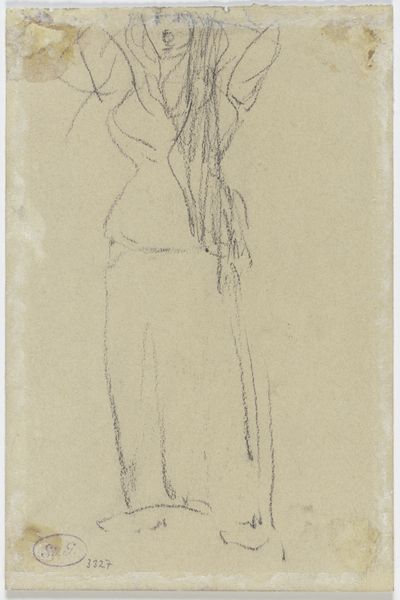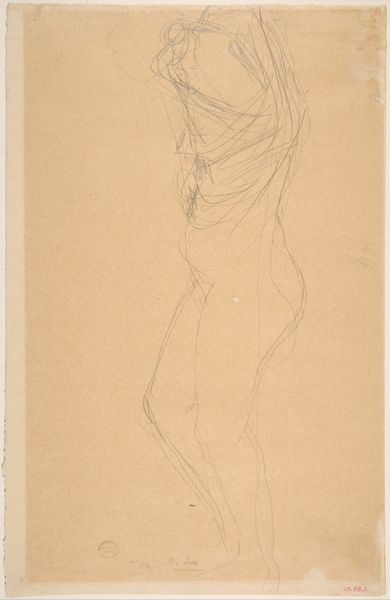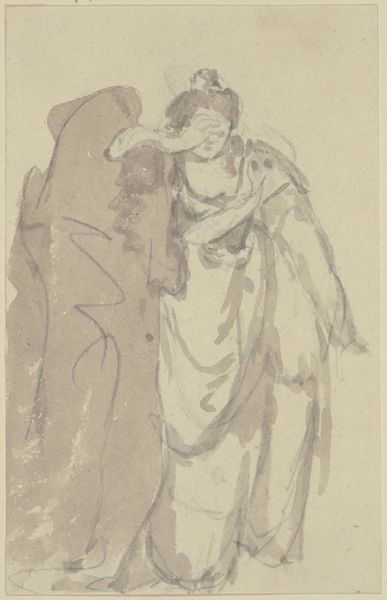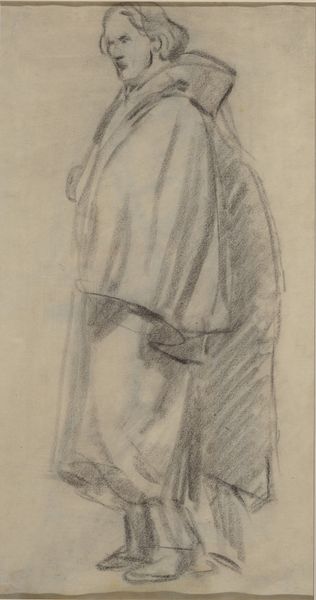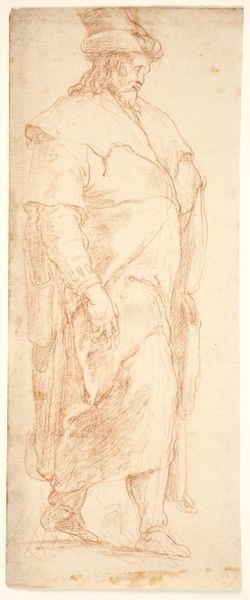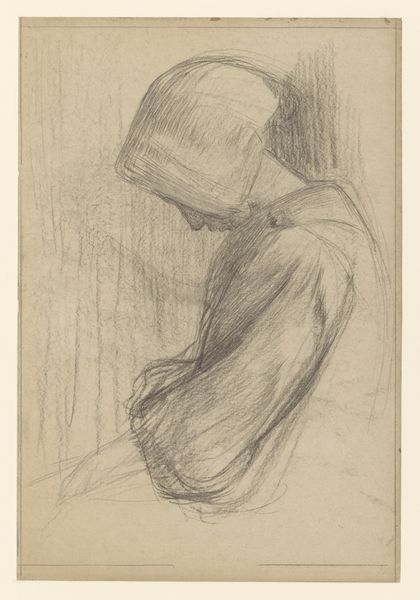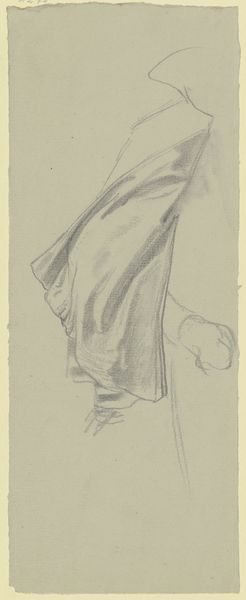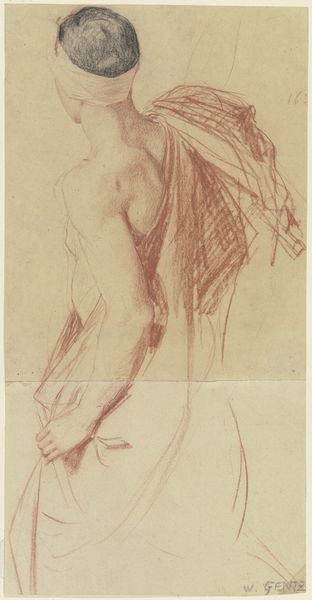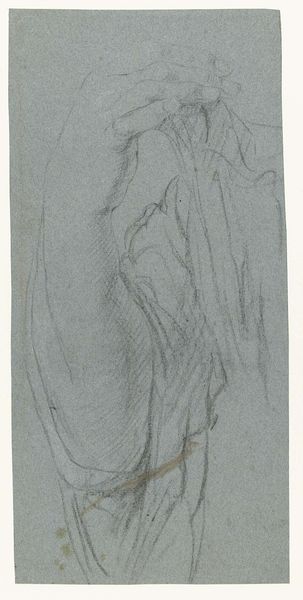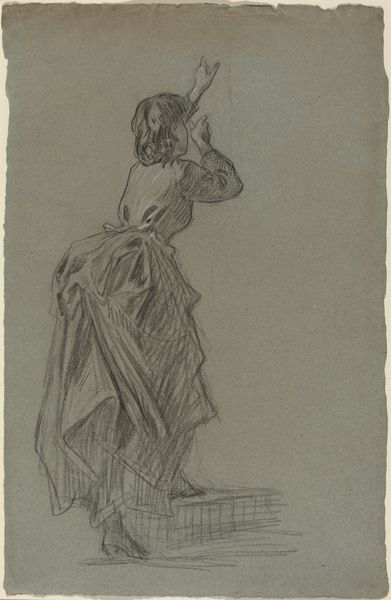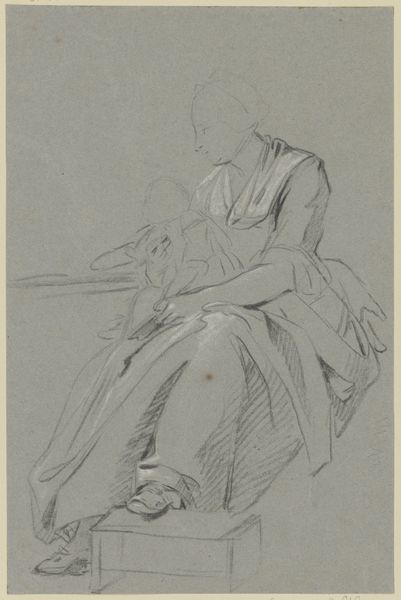
drawing, paper, pencil
#
portrait
#
drawing
#
16_19th-century
#
pencil sketch
#
figuration
#
paper
#
pencil
Copyright: Public Domain
Editor: This pencil drawing, “Stehende Frau, sich vorneigend,” shows a standing woman leaning forward. The date is unknown, but it appears to be from the 19th century and it's displayed at the Städel Museum. I'm immediately drawn to the artist's economical use of line; it seems unfinished yet so expressive. What compositional elements stand out to you? Curator: Observe how Rumpf has constructed the figure through line alone. The swiftness of the pencil strokes betrays the artist's immediate impressions. Notice the distinct areas of darker, more assertive marks which define the drapery and anchor the figure, and the softer, more suggestive strokes that describe the contours of her body. Editor: The way the lines flow does create a sense of movement. Curator: Precisely. This creates visual rhythm within the composition. Ask yourself, what kind of spatial relationships is he creating? The lack of background eliminates context, directing the focus solely towards the form. Editor: It's interesting that you point out the lack of background; it does heighten the focus on the woman's posture and clothing. Curator: The subtle variations in line weight is what adds depth and volume. The artist successfully uses the simplest means to define a form. Editor: I now see how the intentional variations in pressure really shape the overall form and communicate so much. It feels very modern in a way. Curator: Indeed. The study reminds us how the essential visual components carry the greatest impact. A great piece to consider the language of art making and the interplay of line and form.
Comments
No comments
Be the first to comment and join the conversation on the ultimate creative platform.

